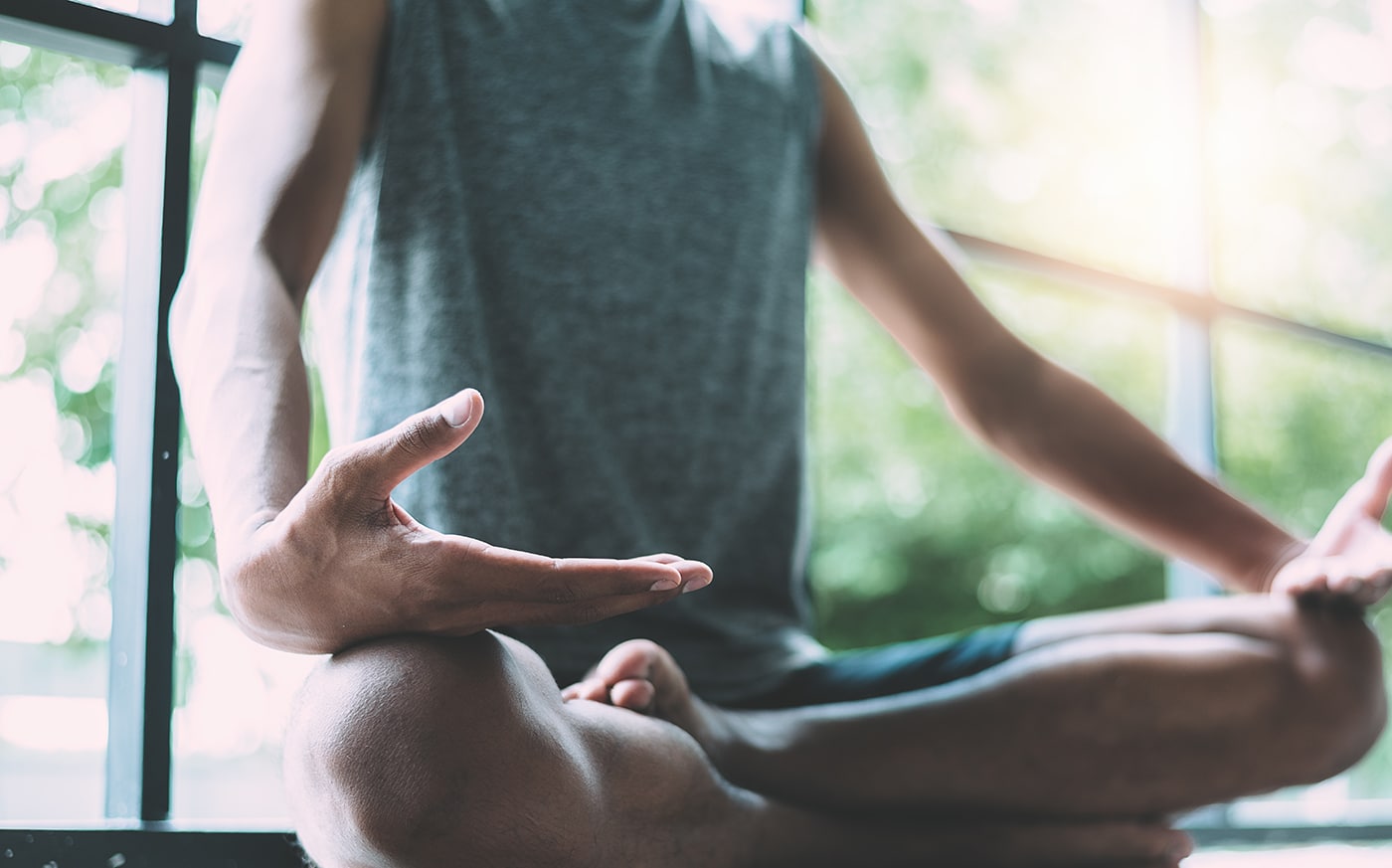
Think You Can’t Meditate? Here’s How to Start, in 8 Easy Steps (and Just 3 Minutes a Day)
By now, the benefits of meditation are no secret.
Studies numbering in the thousands have demonstrated that meditation can reduce stress, counter depression, improve memory, and boost performance.
It even changes the structure of your brain in positive ways by increasing brain activity and density of brain tissue.
In short, the power of meditation on your body, mind — and even outlook on things like nutrition and fitness — is profound.
And in this day and age of constant distraction, increasing responsibilities, and pressures of work and family, for many people (myself included) meditation has become an absolutely essential practice for a balanced and happy life.
It’s my daily mental hygiene ritual that provides a consistent source of peace, balance, and perspective in my life. Always there when I need it… to help me enjoy all the small moments in life as well as navigate the major challenges when they inevitably come.
In fact, even though I struggled to get started with meditation, I now typically sit in meditation for at least an hour each day, simply because it benefits me so much.
But here’s the (very important) thing:
To receive the benefits of meditation, you don’t need to commit massive amounts of time or restructure your life.
Here’s my argument for why that’s true…
Meditation Isn’t Just for Monks
Fortunately, to experience the benefits of meditation, you don’t have to make sweeping changes to your lifestyle, quit your job, or even sit for an hour like I do.
You can begin to unlock the benefits with just a few minutes each day.
You don’t have to use a mantra, change your religion, or believe in a higher power. You don’t have to buy a special cushion or sit cross-legged.
And you certainly don’t have to become a monk.
Just by sitting quietly and deliberately focusing your attention for a few minutes each day, you can begin to turn down the volume of worry, self-doubt and negative self-talk, all while improving focus and concentration so you can live and work more effectively.
But for all its benefits, meditation is one of the easiest practices to write off. You might think:
“I have too much of a monkey mind, meditation could never work for me.”
“I want to live life to the fullest, I don’t want to become disengaged or dispassionate.”
“My mind is my most important asset. Why would I want to quiet it?”
You might worry that taking a step towards balance may mean losing your edge at work or being less able to meet the responsibilities at home. But in addition to honing the mind, meditation grows emotional intelligence and empathy — skills essential for effective work, leadership, and building relationships.
As Abraham Lincoln famously said, “Give me six hours to chop down a tree and I will spend the first four sharpening the axe.” Meditation is the tool that sharpens the axe for better performance and optimal living.
And, you might even find that it brings a little more fun, laughter, and joy to your life as well.
What it Means to “Succeed” at Meditation
If you’ve ever tried meditation and quickly decided that it wasn’t for you, you aren’t alone.
I tried to meditate for years before finally experiencing that “ah ha moment” where I got a glimpse of what all these crazy folks were talking about.
Looking back, I realized that I had a major problem that almost guaranteed that I would fail right out of the gate:
I thought I knew what meditation was, I thought I knew how to meditate, and most importantly, I thought I knew what meditation was going to get me.
I would “focus on my breathing” as hard as I could, believing that if I focused hard enough I would finally stop the thoughts from flowing through my head.
I equated success with mental silence, and the longer I was able to keep the thoughts from flowing the better I did. The end goal that I was after?
Complete quiet. Transcendental experience. Or at least a feeling of peace when I got up from my cushion.
I now know that I was setting myself up to fail because I was missing one key point:
Meditation is not about experiences. Meditation is not about quieting the mind. It’s about being present with whatever is happening to you. Right now. Moment to moment.
Succeeding at meditation means redefining success. The bottom line is that your mindfulness practice is simply meant to create some space in your life, so that you can observe what is going on. It’s not about the experience; it’s about bringing awareness to whatever it is that you are experiencing.
The not-so-sexy truth is that meditation serves to get you in touch with what is going on in your head, what is going on in your body, and what is going on around you. You learn to watch these thoughts and feelings, and eventually you learn to let them happen with less judgment.
This is where the real benefit comes in.
If we can define a successful meditation session not as one where the mind never wanders, but one in which we remain mindful about refocusing every time it does wander (even if it wanders a hundred times!), then suddenly the frustration and feelings of inadequacy melt away.

How to Meditate: 8 Steps to Get You Started
Convinced and ready to get started?
As you know, when you’re building a habit for the first time, it helps to minimize the amount of stress it causes you. Below I’ve outlined eight simple steps to help minimize the stress (and maximize your chances of having it stick).
Here’s how your simple meditation session should look:
Step 1. Set a timer for three minutes, or for however long you plan to meditate.
Step 2. Sit in a quiet, comfortable spot where your back is supported and your spine is relatively straight. It could be the floor against a wall (on a thin pillow, if you like), in a chair, or on your bed. You can sit with your legs crossed or straight, whichever is more comfortable for you. Don’t lie down; it’s too easy to fall asleep that way.
Step 3. Place your hands in a comfortable position. You can rest them on your thighs, place them palms-up on your knees, or form a circle like this. Again, just choose something that feels good and won’t distract you.
Step 4. Start your timer, and gently close your eyes. Take two slow, deep breaths, each in and out through your nose. This is a signal to your brain that the meditation session has begun, and you can think of these breaths as “cleansing” as you relax your body around them.
Step 5. Continue breathing through your nose, slowly but normally, the way you breathe throughout the day when you’re not thinking about it. You may find that it’s hard to breathe normally when you are focused on the breath. That’s completely normal, and over time your breath will return to its normal rhythm.
Step 6. Our focus during this meditation is our breath. The easiest way is to focus on the sensation of air moving past the strip of skin that separates your nostrils. Notice the feeling of air moving in and out of your nose as you breath, in and out.
Step 7. Other thoughts will inevitably enter your mind (sometimes for the entire session!). Remember the goal is not perfect focus, it’s to notice whatever is happening. When you notice that you’re mind has strayed, just notice the thoughts and let them go, gently guiding your focus back to the breath.
Very important: The biggest barrier to starting a meditation habit is feeling like you’re doing it wrong. There’s nothing wrong about stray thoughts, even if you spend the whole meditation session feeling distracted. It’s actually impossible for us to prevent thoughts, and the more we fight against them, the more agitated the mind becomes. Instead, we just watch it without judgment. The stray thoughts eventually calm down, just notice the thought and move your attention back to your breathing, without judgment or anger or feeling like you’re failing.
Remember, the point of our meditation is the noticing and letting go of these thoughts so that you can train your focus … and if they never happened, you’d have nothing to train with! So no resentment, even on the days when stray thoughts seem to dominate the entire session.
In the beginning, your meditation sessions may not feel calm. They may not feel peaceful. You may experience a lot of negative self-talk, you might experience intense emotions, you might find that your body is restless and it’s impossible to get into a comfortable position. This is all normal. Again, the goal is not to have a peaceful meditation. It’s just to notice whatever it is that we are experiencing. The benefits will come. The benefits are the side effects of learning to observe whatever is happening without judgment. As long as you put in your time, and keep returning to the breath, you are doing it right. Trust the process.
Step 8. When the time is up, take two more deep breaths and open your eyes. Take a moment to celebrate your success and congratulate yourself. You just meditated!
Ready to Experience the Benefits of Meditation?
As I said before, just a few minutes of regular meditation can produce life-changing benefits like stress reduction, increased focus, and better performance. Not to mention a more mindful approach to nutrition and food.
So if all it takes is a few minutes each day, what’s holding you back?
There’s no time like today to start a meditation practice. So take a seat, close your eyes, and I’ll see you in three minutes.




Leave a Reply